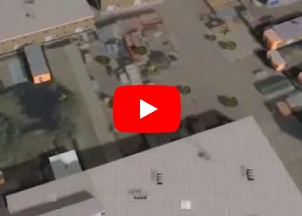How to automatically import WFS Areas for a new Project: Difference between revisions
Jump to navigation
Jump to search
(Created page with "A common occurrence with Project Templates is that additional data is required in order to make their calculations function properly. This data can range from relevant sub...") |
No edit summary |
||
| (10 intermediate revisions by 3 users not shown) | |||
| Line 1: | Line 1: | ||
A common occurrence with [[Project | A common occurrence with [[Template Project]]s is that additional data is required in order to make their calculations function properly. This data can range from relevant subdivisions for individual calculations, to water level areas, to complete and unique datasets. This relevant data may be readily available via a [[WFS]], hosted on an external location. To minimize the effort required to create new projects which rely on additional data, a [[Geo Plugin]] can be set up to automatically import that data into new projects. | ||
<youtube>NIeVFbVXVcs</youtube> | |||
{{editor location|geo plugins}} | {{editor location|geo plugins}} | ||
| Line 14: | Line 16: | ||
| If the layer's data contains an [[Attribute]] the value of which uniquely identifies each feature, find the "Unique ID Attribute" input, click on "Select", and use the prompt to select that [[Attribute]]. | | If the layer's data contains an [[Attribute]] the value of which uniquely identifies each feature, find the "Unique ID Attribute" input, click on "Select", and use the prompt to select that [[Attribute]]. | ||
}} | }} | ||
{{article end | {{article end | ||
|notes= | |||
* [[Geo Plugin]]s created to be used as part of a [[Template Project]] for the creation of a new [[Project]] can also be used when [[Import Geo data|importing geo data]]. | |||
|seealso= | |seealso= | ||
* [[Geo Plugin]] | * [[Geo Plugin]] | ||
* [[Template Project]] | |||
* [[WFS]] | * [[WFS]] | ||
|howtos= | |||
* [[How to create a Geo Plugin to import Areas from the Geo Share at Project creation]] | |||
* [[How to create a Geo Plugin to import district in the Netherlands at Project creation]] | |||
|videos= | |videos= | ||
{{video|link=https://youtu.be/nh332NTyKzI|description=Tygron Geo Share and Geo Plugins.|language=dutch}} | |||
{{video|link=https://youtu.be/IhnEk7mp5hE|description=Data-integration with Geo Share en Geo Plugins in the {{software}}.|language=dutch}} | |||
}} | }} | ||
[[Category:How-to's]][[Category:Geo Plugin]][[Category:Geo Link]] | |||
Latest revision as of 12:52, 8 January 2024
A common occurrence with Template Projects is that additional data is required in order to make their calculations function properly. This data can range from relevant subdivisions for individual calculations, to water level areas, to complete and unique datasets. This relevant data may be readily available via a WFS, hosted on an external location. To minimize the effort required to create new projects which rely on additional data, a Geo Plugin can be set up to automatically import that data into new projects.
How to set up a Geo Plugin to import Areas from a WFS:
- Ensure the desired WFS is accessible.
- Ensure a Project Source exists for the specified WFS.
- Open the overview for Geo Plugins.
- At the bottom of the left panel, select the AREAS type and select "Add".
- Select the newly created Geo Plugin.
- In the right panel, click on the source's "Select", and select the Project Source which relates to the desired WFS.
- For the layer, click on "Select", and use the prompt to select the exact layer which should be consulted.
- If the layer's data contains an Attribute the value of which should be used as the names of the resulting Areas, enter the Attribute's name in the "Name Attribute" field.
- If the layer's data contains an Attribute the value of which uniquely identifies each feature, find the "Unique ID Attribute" input, click on "Select", and use the prompt to select that Attribute.
Notes
- Geo Plugins created to be used as part of a Template Project for the creation of a new Project can also be used when importing geo data.
How-to's
- How to create a Geo Plugin to import Areas from the Geo Share at Project creation
- How to create a Geo Plugin to import district in the Netherlands at Project creation
